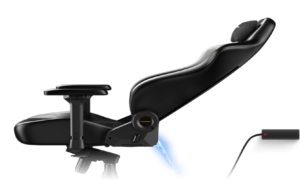The heart of your camper electronics, RV van, or truck is the onboard battery. But why install an additional solar panel battery in the mobile home at all? On the way to the right onboard battery, there are a few things to consider. What power requirements do you have? What requirements should your battery meet? In the beginning, the questions are piling up, which is why in this article we will guide you through the calculation of your electricity requirements in the camper as clearly as possible. We take you to step by step through the jungle of terms and numbers relating to the perfect motorhome battery.
RV Battery • That’s why it’s so important
To explain why a second battery in the campervan is so important, it doesn’t take many digressions. The answer to this question is very simple! Because the starter battery already installed in your car (usually in the engine compartment) is simply an unsuitable battery for consumer supply. So to be able to use a laptop, radio, or kitchen appliances in the mobile home without having to do without your camera starting up reliably in the future, there is only one thing that helps: Get a good second battery! Are you interested in the topic? We are very happy! Here is a detailed explanation for all those who, like us, always want to know everything in detail.
First of all, let’s talk about the starter battery. This supplies the starter, which draws very large amounts of current from the battery for a short time (when starting the car). In addition, smaller consumers such as lights and radios are also powered by the battery. But only as long as the engine is not running! As soon as this is started by the starter, the alternator takes over the supply of the consumers and no more current is drawn from the battery. For this reason, the starter battery is designed to deliver large amounts of electricity for a short time. She has what is called a “flat cycle”. These batteries are designed to discharge little, at best by a maximum of 20%!
When it comes to powering our electronic devices, we have completely different requirements. We want to be able to operate our devices even when the sun is not shining anyway or we are connected to shore power. Therefore, you need a battery in the mobile home that can be discharged more deeply, i.e. has a “deep cycle”. Battery deep cycle can deliver power to your loads for many hours without drastically reducing their lifespan.
Motorhome batteries – Our recommendations
Don’t want to read the whole text? No problem, because in this case, we have put together a small list of suitable batteries for the motorhome for you, based on our experience. But beware, finding the perfect battery for your camper is a very individual endeavor! Our recommendations are based solely on our experience and therefore do not apply one-to-one to you and your camper. You can learn how to calculate the right battery size yourself and which batteries are available to further down in the text! So you can be sure to find the right model for you.
- AGM with 80Ah*: Sporadic camping & weekend road trips. Enough for the fridge, the light, and charging your camera or cell phone batteries.
- AGM with 150Ah*: Longer road trips (several days-weeks), partly self-sufficient. Sufficient for the refrigerator, the light and charging cameras, mobile phones, laptops,s, etc.
- AGM with at least 230 Ah*: Self-sufficient standing and road trips over longer periods (weeks-months). Sufficient for the refrigerator, light, intensive work on the laptop, charging the device,s and operating a small inverter.
- LiFePo4 with at least 150Ah*: Long road trips, self-sufficient standing,g or living in a camper with very high power requirements at the same time. Sufficient for all scenarios mentioned above plus the operation of a solar inverter.
Electricity requirement in the mobile home – That’s how much electricity you need!
So that you can be self-sufficient on the road without running out of electricity in between, you should think about the required battery capacity at the beginning of your electrical planning. Ly, it’s very simple. The more devices (consumers) you want to operate with your battery in the mobile home, the larger the battery must of course be. Accordingly, it may seem easiest to just buy a really big battery. Unfortunately, batteries are anything but cheap. A good LiFePo4 battery with 200Ah, for example, costs more than 2000$Toto save money, you should first calculate your electricity requirements carefully. Think about which electricity consumers you will use in your mobile home. As a reminder of where the power guzzlers are hiding in your motorhome, you are welcome to use the list below.
Consumer:
Light (kitchen, seating area, reading lamp, etc.)
Refrigerator
Water pump
Fan (kitchen, toilet, bathroom)
Heating & hot water boiler
Power supplies (computer, mobile phone, tablet, camera, music box, …)
Blender, coffee maker
According to our current calculation, we need a total of 175.9-ampere hours per day! Phew, quite a lot! Since we would like to have at least one day’s power reserves even without a battery charging option, the most common batteries, with sizes around 100-150Ah, are already excluded from our search.
Battery types • The most important advantages and disadvantages
As far as power requirements are concerned, everything should now be clarified. But which battery should it ultimately be for the mobile home? Because watch out, not only in terms of performance but also in terms of price, the respective battery types differ very significantly from one another.
Wet battery (lead-acid)
The wet battery is one of the cheapest battery models. On the downside, however, this type of battery isn’t quite as “low-maintenance” as its competition. As an onboard battery for the mobile home, the wet battery is ultimately only suitable to a limited extent due to its numerous disadvantages.
Advantages: Inexpensive
Disadvantages:
High maintenance: the acid level of the battery must be checked regularly
Outgassing: During use, gases are created in the battery, which must be evacuated from the mobile home
Not Leakproof: Acid may leak
Can only be discharged up to approx. 50% and not very cycle-safe; y, therefore, re need a battery that will double the capacity you want
Lead-gel batteries
Wita h Lead gebatteriesry, the electrolyte is bound in a gel, which means that these batteries are leak-proof and often maintenance-free. Compared to lead-acid batteries, however, this type of battery is significantly heavier and also quite sensitive to low temperatures.
Advantages:
Almost maintenance freLeakproof
Leak proof
Also tolerates deeper discharges, as long as the battery is quickly recharged afterward
Disadvantages:
High weight
Can only be discharged up to approx. 60%
Doesn’t tolerate the drawing of high currents well (be careful with large inverters)
Doesn’t tolerate low temperatures well
AGM (Absorbant Glass Mat)
We decided on an AGM battery because it simply offered the best price-performance ratio for us. AGM technology is a combination of the two battery types mentioned above because the electrolyte is in a glass fleece, and the battery canto delivers high currents in a short time. Similar to the wet battery! This property, in turn, is good for the operation of power inverters. In addition, they are leak-proof and significantly more robust against deep discharges (as with gel batteries). You can find out which model of AGM battery we have installed here:
Advantages:
Maintenance freLeakproof
Leak proof
Low self-discharge
Usually long service life
Shorter absorption time than previous types
Withstands the drawing of high currents well
Tolerates deep discharge better than n wet battery
Disadvantages:
Can only be discharged up to approx. 70%
Lithium technology (LiFePo4)
This battery is by far the most suitabl12-volt12 volt lithium battery for RV needs. Small, light, charged super fast and insensitive to deep discharge. A technology that inspires, if only the equally impressive price were not to be considered… While the costs for an AGM battery with 100Ah are around $100, you pay around $1000 for the same battery with lithium technology.
Advantages:
Maintenance free
No self-discharge
Deep discharge unproblematic: completely dischargeable
Small and lighLeakproof
Leak proof
Loading very fast
Disadvantages:
very expensive
Wet battery, A, GM, or lithium • Which battery type is right for me?
While many campers have been satisfied with their wet battery for years, others have installed several lithium batteries. Which battery type is ultimately the right one for you depends very clearly on your travel behavior and power requirements. Because depending on whether the Thermomix and television are running in the camper every day, or whether such power guzzlers are not used, there are sometimes large deviations in terms of daily power consumption. Accordingly, when choosing the type of battery, there are a few points that should be considered and considered. To make it easy for you to find your way through the technology jungle, we have put together the most important questions here.
1. What is your power consumption? Are you dependent on high charging currents (inverter operation)?
If you want to install a powerful inverter, it is best to use an AGM or lithium battery. Not only do they withstand the drawing of high current buts, but they also have enough power to withstand inverter operation. If a 12V connection without an inverter is enough for you and you are more economical with your electricity consumption, the cheaper gel battery might be just as good an alternative.
2. What is your budget
Clearly, the LiFePo4 batteries are not suitable for the small purse. Although they are more worthwhile in the long term than lead batteries due to their long service life, lithium batteries often simply do not fit into the budget at first. If you are looking for a short to medium-term solution, you are best advised to go with lead batteries. The AGM battery has the best price-performance ratio, which is slightly more expensive than the other lead technologies but offers numerous advantages.
In most cases, the lithium battery is the most worthwhile in the long term. Thanks to its long service life (over 10, sometimes up to 20 years with daily use), it is far superior to lead batteries. Considering the cumulative costs of constantly buying new lead-acid batteries over thiperiodme, the lithium battery doesn’t seem that expensive after all.
3. Would you also like to camp in winter?
Some batteries don’t handle cold temperatures as well as others. Accordingly, there are a few things to consider here if you want to live in your motorhome all year round or camp a lot in winter. In this case, gel batteries are not recommended. However, it is important to mention that not only the gel battery is affected by capacity losses and voltage losses at cold temperatures. Rather, this is a general problem of battery technology.
4. How much space do you have in your motorhome? How many loads can your camper take?
Lead-acid batteries are quite large and heavy. However, since there is not much space in the camper, lithium batteries are the optimal solution. These are usually only half the size and weight with the same capacity (which, in contrast, to lead batteries, can also be fully utilized). Especially if your motorhome is already close to the permissible total mass, 40kg more or less makes a decisive difference with a 230Ah battery.
5. How and how often is the mobile home battery charged?
Depending on how regularly you charge your RV battery, you can choose between a cheaper battery with a lower cycle (e.g. wet battery) or a high-end battery with a deep cycle, such as the lithium battery. Would you like to charge your RV batteries via solar power and the alternator? In general, do you rarely stay in one place for more than 1-2 days? Then a wet or gel battery may be sufficient for you. However, if you want to be on the road with your camper all year round and also want to be self-sufficient for several days in less sunny areas, you need a significantly more powerful battery with a deep cycle. In this ca, so you will probably not be able to avoid a lithium battery!
What else you should know about motorhome batteries!
Wow, quite a lot to consider when choosing your RV battery, right? So that nothing can go wrong with the purchase, we have compiled the most important terms and key figures here.
The capacity of a battery
The capacity of a battery tells you how much electricity it can supply. This parameter is given iampere-hoursrs. We already clarified the calculation of thampere-hoursrs you need for your battery at the very beginning. However, it is important to note that not every battery can be used until it is completely discharged. Especially lead batteries such as wet batteries, g, el, and AGM batteries should only be discharged to about 50-70% depending on the type! If you have decided on a dead battery, you must of course choose the capacity of your battery accordingly larger!
End-of-charge voltage
The end-of-charge voltage is the s Voltage that must not be exceeded during the charging process. This is usually between 14.4 and 14.7 volts. Gel, A, GM, and other 12v lithiubatteriesry react particularly sensitively when this voltage is exceeded and can be damaged in the long term. You should therefore take this into account when selecting your battery chargers.
End-of-discharge voltage
The end-of-discharge voltage is the voltage above which the battery should no longer be discharged. Otherwise, deep discharge would occur, which can lead to a drastic reduction in the service life of lead-acid batteries. With these batteries, the end-of-discharge voltage is reached from around 10.5 to 11.8V – depending on the outside temperature and the battery type.



































